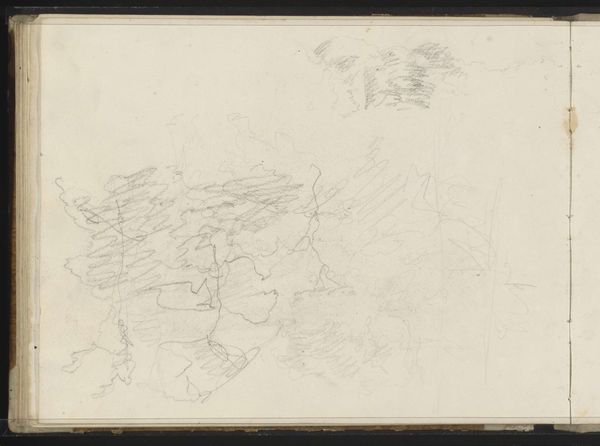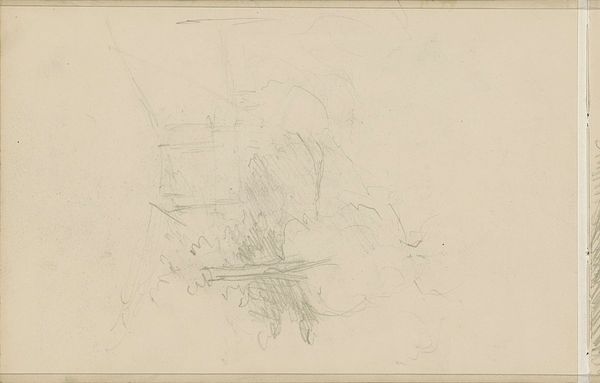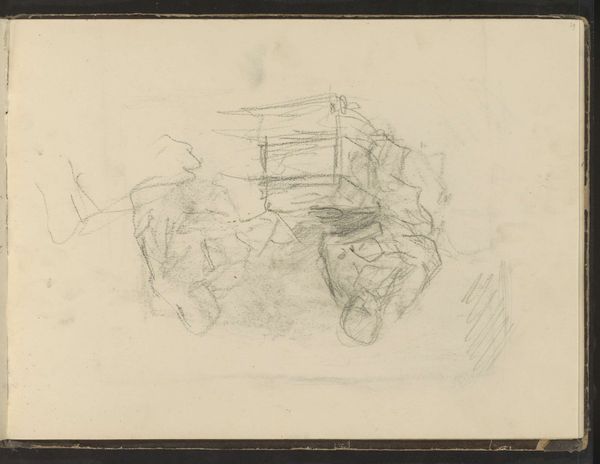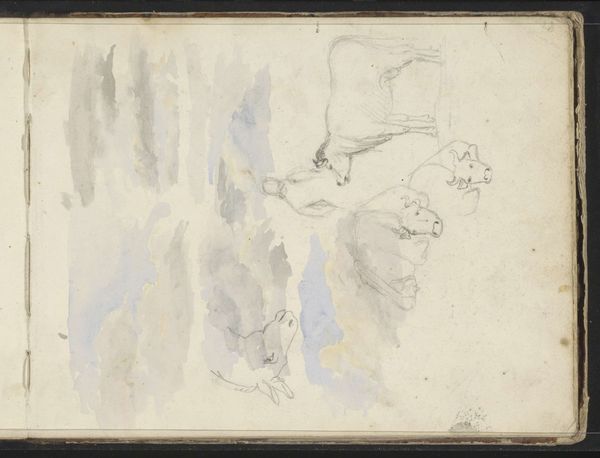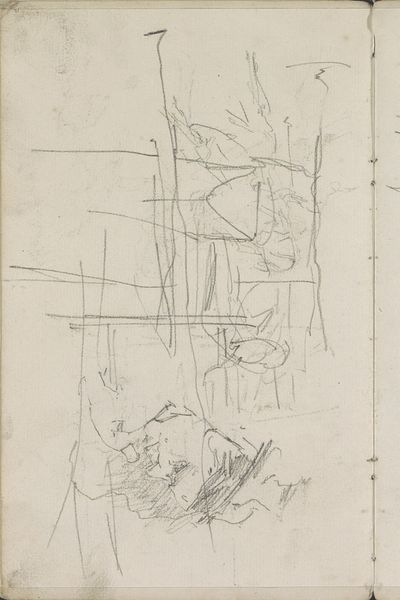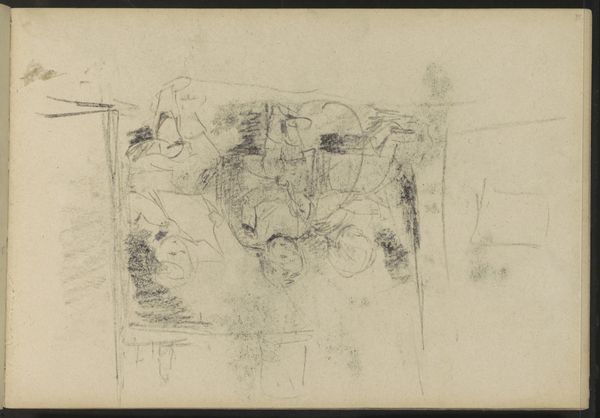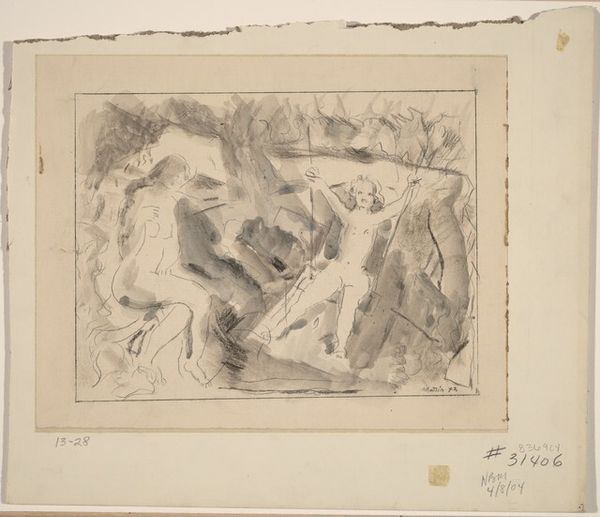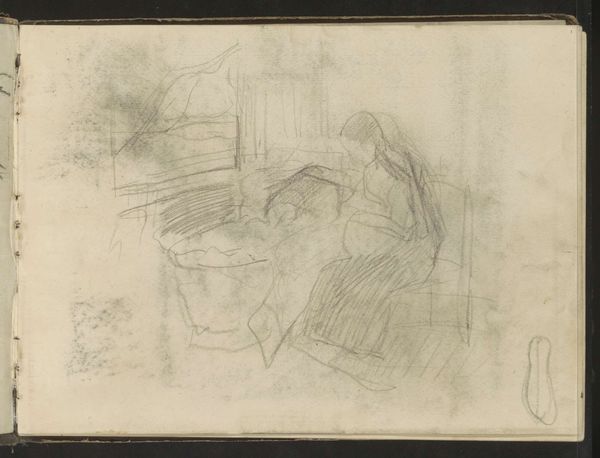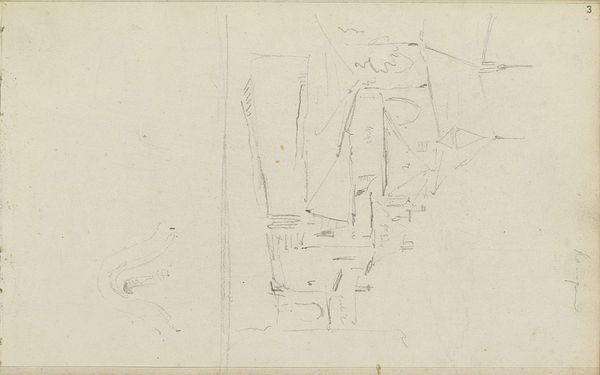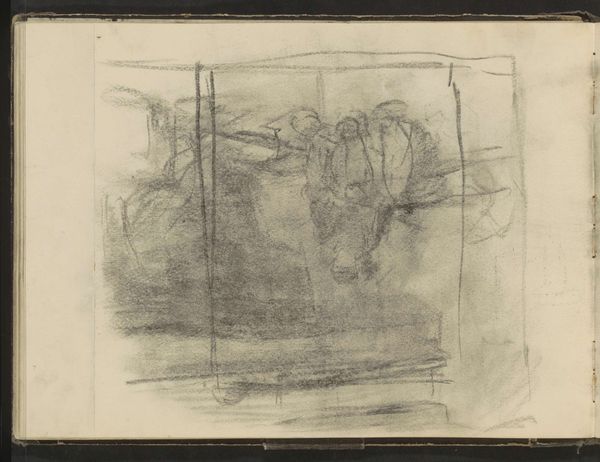
drawing, pencil
#
drawing
#
aged paper
#
toned paper
#
impressionism
#
pen sketch
#
sketch book
#
incomplete sketchy
#
figuration
#
personal sketchbook
#
child
#
ink drawing experimentation
#
pen-ink sketch
#
pencil
#
sketchbook drawing
#
genre-painting
#
sketchbook art
Copyright: Rijks Museum: Open Domain
Curator: This is a sketch by Albert Neuhuys, titled "Zittende figuren en twee kinderen in een interieur," placing seated figures and two children in an interior. It's rendered with pencil and ink on toned paper. Editor: There's a stark vulnerability to this. It almost feels like a fleeting memory caught on paper; very rough and incomplete. Curator: Exactly. Given Neuhuys’ body of work which often depicts the daily lives of rural Dutch families, it gives a window into 19th-century social structures, especially the roles of women and children in the household economy. The sketchbook context reframes what we typically see in genre painting; it's rawer. Editor: It definitely strips away the romantic idealization. Look at the way the figures are sketched; so quickly, with such direct, almost crude lines. There's nothing precious about the materials either. It feels very process-oriented, showing how observation becomes translated through hand and pencil, and its function of production in a studio. Curator: This aesthetic aligns, perhaps, with Impressionism in its focus on the immediate impression, prioritizing fleeting observation over polished finish. Think of the implications of Neuhuys documenting marginalized communities. It can be powerful when their experiences become more visible within the larger cultural dialogue of the time. Editor: Absolutely, this challenges the idea of "high art" when considering its labor. The labor of depiction becomes laid bare and we are confronting Neuhuys’ work directly. Curator: True. A piece like this calls attention to issues of class and representation, both then and now. Editor: Precisely, these quickly rendered impressions resonate beyond its period. By exploring the making of art through humbler materials, it democratizes our engagement with art making and reminds us to focus on art-making as a practice. Curator: This type of sketch can offer profound entry points to engage with its artistic, social, and political meaning, as well as what the practice entails in relationship to gender, labour and class in a new manner. Editor: It shifts from solely being art in terms of aesthetics towards process and production, I’ll leave with that sentiment.
Comments
No comments
Be the first to comment and join the conversation on the ultimate creative platform.

